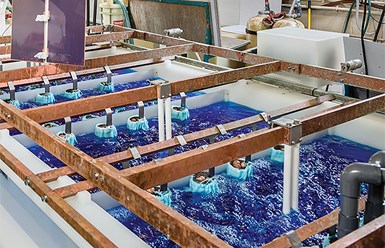Lumishield Electroplating Process Improves Adhesion and Corrosion Resistance
Once Lumidize is applied, surfaces chemically bind to topcoats without phosphate or primer.
#surfin
Edited by

LumiShield Technologies’ Lumidize is an adhesion-strengthening aluminum electroplating process that replaces surface preparation products containing heavy metals and phosphates. Lumidize is a proprietary aqueous process that plates any conductive substrate. The resultant electroplate forms a hard barrier, improving adhesion and corrosion resistance. Once Lumidize is applied, surfaces chemically bind to topcoats without phosphate or primer. Made in the U.S., Lumidize is compatible with pulse and DC systems, and compliant with U.S. air emissions regulations.
Lumishield Technologies Inc.|412-607-8351|lumishieldtech.com
RELATED CONTENT
-
Defects in Hard Chromium Deposits Part I: Causes and Cures
The causes of and remedies for defects in hard chromium deposits are explored in the first of this two-part P&SF article from 1984. Photomicrographs and SEM (scanning electron microscope) photographs will illustrate that most defects in various hard chromium deposits arise from defects in the basis metal. These defects may be in the original metal surface or may be caused by preplate finishing. Homogeneous hard chromium deposits can be produced only by eliminating these defects. Practical suggestions and procedures will be given.
-
Black Chromium Finishing: Beauty and the Beast
Over the past 10 years, there has been commercial development of black chromium deposits from a trivalent chromium electrolyte. This paper will review the deposit characteristics and operational consideration of these similar, but different chromium plating deposits.
-
A Pulse/Pulse Reverse Electrolytic Approach to Electropolishing and Through-Mask Electroetching
Research at the authors’ laboratories has focused on pulse/pulse reverse electrolysis on cathodic processes, such as hard chromium plating from non-hexavalent chemistries. This papers describes studies into pulse/pulse reverse electrolysis as applied to electrochemical metal removal processes, such as electropolishing and electroetching.















